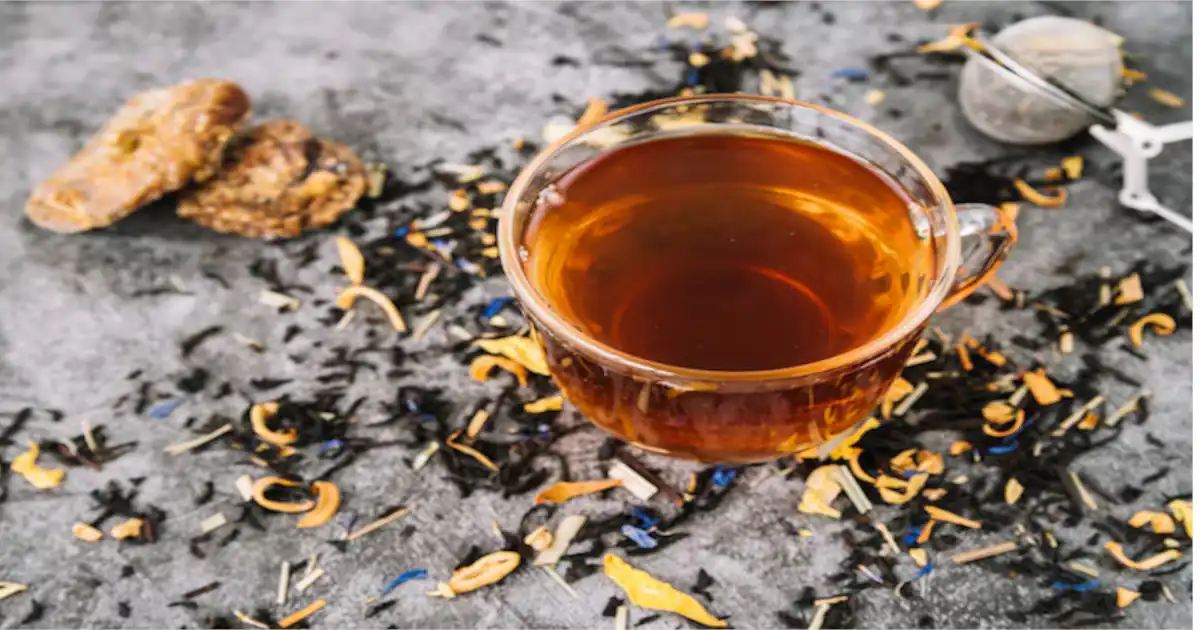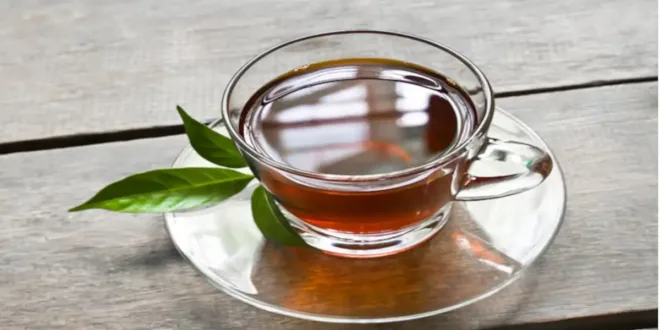Introduction to hojicha tea
In the world of tea, hojicha (ほうじ茶) stands out as a unique and aromatic beverage that has captured the hearts of tea enthusiasts around the globe. Originating from Japan, hojicha is known for its distinct roasted flavor and lower caffeine content than other green teas. This article will explore the origins, preparation methods, health benefits, and cultural significance of hojicha tea, providing a comprehensive guide for newcomers and seasoned tea drinkers.
What is Hojicha Tea?
Hojicha is a type of Japanese green tea that is distinct due to its unique roasting process. While most green teas are steamed or pan-fired, hojicha roasts green tea leaves over high heat. This process not only alters the color of the leaves from vibrant green to a reddish-brown but also brings out a rich, smoky flavor profile that differentiates it from other green teas.
The Production Process of Hojicha
The production of hojicha involves several meticulous steps, each contributing to its unique characteristics:
- Tea Selection: The process typically starts with selecting high-quality green tea leaves, often from the Sencha or Bancha varieties. Bancha is particularly popular among hojicha due to its robust flavor and low cost.
- Steaming: The selected tea leaves are briefly steamed to prevent oxidation. This step helps retain the leaves’ fresh taste before they undergo roasting.
- Roasting: The steamed leaves are then roasted in a clay or metal pan at high temperatures. Depending on the desired flavor intensity, the roasting process can last anywhere from a few minutes to over an hour. This step is crucial, as it transforms the chemical structure of the tea leaves, resulting in a distinctive aroma and flavor.
- Cooling and Packaging: After roasting, the tea leaves are cooled quickly to preserve their flavor and aroma. Once cooled, the hojicha is packaged for distribution.
The Flavor Profile of Hojicha
Hojicha’s flavor is a delightful contrast to the grassy and vegetal notes in typical green teas. Instead, it boasts:
- Roasted Notes: The primary flavor is a deep, toasty, and smoky essence that can evoke the scent of roasted nuts or caramelized sugar.
- Sweet Undertones: A subtle sweetness complements the roasted flavor, making it a soothing drink.
- Earthy Elements: Some varieties of hojicha may carry earthy notes reminiscent of freshly tilled soil, adding to its complexity.
These characteristics make hojicha a versatile, enjoyable hot and cold beverage.
The Health Benefits of Hojicha Tea
Hojicha tea is not just a flavorful drink; it also offers several health benefits:

One of the most appealing aspects of hojicha is its low caffeine content. The roasting process reduces the caffeine levels, making it a perfect choice for those sensitive to caffeine or who want to reduce their intake. Enjoying hojicha in the evening can help avoid sleep disturbances while satisfying the desire for a warm beverage.
2. Rich in Antioxidants
Like other green teas, hojicha is rich in antioxidants, including catechins and polyphenols. These compounds are known for their ability to combat oxidative stress and inflammation in the body. Regular consumption of hojicha may contribute to improved overall health and a reduced risk of chronic diseases.
3. Aids Digestion
Hojicha is often praised for its digestive benefits. The roasted tea may help soothe the stomach and promote healthy digestion, making it an excellent choice after meals. For this very reason, many Japanese people traditionally consume hojicha as a post-dinner drink.
4. Supports Heart Health
Research suggests that green tea, including hojicha, may support heart health by improving cholesterol levels and reducing blood pressure. The antioxidants found in hojicha can improve cardiovascular function, promoting overall heart health.
5. Enhances Mental Clarity
While hojicha is low in caffeine, it still contains the amino acid L-theanine, known for its calming effects. This combination can enhance mental clarity and focus without the jittery side effects often associated with higher-caffeine beverages.
Preparing Hojicha Tea: A Step-by-Step Guide
Preparing hojicha tea is a straightforward process that anyone can master. Follow these steps to brew the perfect cup:
Ingredients Needed
- Hojicha Tea Leaves: Loose leaves or tea bags.
- Water: Fresh, filtered water for the best taste.
Equipment Required
- Teapot or Teacup: A kyusu (Japanese teapot) is ideal, but any teapot or cup will work.
- Kettle: For boiling water.
- Measuring Spoon: To measure the tea leaves.
Brewing Instructions
- Measure the Tea Leaves: Use 1-2 teaspoons of hojicha leaves per cup (approximately 240 ml) of water.
- Boil the Water: Heat your water to about 90-95°C (194-203°F). This temperature range is optimal for extracting the flavors without bitterness.
- Pre-warm the Teapot: Pour a small amount of hot water into your teapot or cup to warm it up. Discard the water after a minute.
- Add the Tea Leaves: Place the measured hojicha leaves in the pre-warmed teapot.
- Pour the Water: Pour the hot water over the tea leaves, ensuring they are fully submerged.
- Steep: Allow the tea to steep for about 1-3 minutes. The longer you steep, the stronger the flavor. However, be careful not to overstep, as it can lead to bitterness.
- Strain and Serve: Once the tea has steeped to your liking, strain the leaves and pour the tea into your cup.
- Enjoy: Sip and savor the rich, roasted flavor of your freshly brewed hojicha tea!
Hojicha in Japanese Culture
Hojicha holds a significant place in Japanese tea culture. Its unique flavor and low caffeine content make it a beloved choice among families, particularly during meals. In many households, hojicha is often served to guests as a welcoming gesture, showcasing its warmth and hospitality.
Traditional Pairings
In Japan, hojicha is commonly paired with various foods. Its roasted flavor complements a wide range of dishes, including:
- Sweets: The subtle sweetness of hojicha pairs excellently with traditional Japanese sweets (wagashi), such as mochi or dorayaki.
- Savory Dishes: Hojicha can also enhance savory dishes, including grilled fish or vegetables, as it balances out the flavors.
Hojicha in Modern Cuisine
Beyond traditional pairings, hojicha has found its way into modern cuisine. Its versatility has led to creative culinary applications, including:
- Hojicha Latte: A popular twist, hojicha lattes combine steamed milk with hojicha tea, resulting in a creamy and comforting drink.
- Hojicha Desserts: Chefs and home bakers use hojicha in various desserts, such as ice cream, cakes, and cookies, adding a unique flavor profile that intrigues the palate.
Hojicha vs. Other Green Teas
While hojicha shares a base with other green teas, its unique characteristics set it apart. Here’s a comparison with some popular green teas:
Hojicha vs. Sencha
- Flavor: Sencha is known for its fresh, grassy flavor, while hojicha offers a roasted, smoky taste.
- Caffeine Content: Sencha generally contains more caffeine, whereas hojicha has lower levels due to the roasting process.
Hojicha vs. Matcha
- Preparation: Matcha is made from ground tea leaves whisked with water, whereas hojicha consists of whole leaves brewed in hot water.
- Flavor: Matcha has a creamy, umami flavor, while hojicha is characterized by its toasty notes.
Storing Hojicha Tea
Proper storage is essential to maintain the flavor and aroma of hojicha. Here are some tips for storing your hojicha tea:
- Use Airtight Containers: Store hojicha in airtight containers to prevent air, moisture, and light exposure.
- Keep in a Cool, Dark Place: Place the container in a cool, dark cupboard away from heat sources.
- Avoid Fridge Storage: While some teas benefit from refrigeration, hojicha is best kept at room temperature to preserve flavor.
Conclusion
Hojicha tea is more than just a beverage; it’s a celebration of Japanese culture and a delightful way to experience the rich world of tea. Its unique roasting process, low caffeine content, and numerous health benefits make it an excellent choice for tea lovers of all kinds. Whether enjoyed in traditional ceremonies or modern recipes, hojicha offers a comforting and aromatic experience that can be savored daily.
As you explore the world of hojicha tea, consider its versatility and the joy it can bring to your daily routine. From a simple cup enjoyed in solitude to a delightful pairing with friends and family, hojicha is a tea that invites connection, warmth, and appreciation.
Frequently Asked Questions (FAQs)
What is hojicha tea made from?
Hojicha tea is crafted from roasted green tea leaves, often sourced from varieties like sencha or bancha. The unique roasting process gives it a distinct flavor profile and a reddish-brown color.
How is hojicha prepared?
To prepare hojicha, steep 1-2 teaspoons of the roasted tea leaves in water heated to approximately 90-95°C (194-203°F) for 1-3 minutes. This allows the rich flavors to develop without bitterness.
What are the health benefits of drinking hojicha?
Consuming this roasted tea offers several health advantages, including low caffeine content, rich antioxidants, digestive support, and potential heart health benefits. Its L-theanine content can also enhance mental clarity.
Can hojicha be enjoyed cold?
Yes, hojicha can be enjoyed both hot and cold. Iced hojicha is a refreshing beverage, especially during warmer months, and its unique flavor remains delightful in chilled form.
How should hojicha tea be stored for maximum freshness?
To keep hojicha fresh, store it in an airtight container in a cool, dark place away from heat and moisture. Avoid refrigerating it, as this can affect the flavor.
What foods pair well with hojicha?
This versatile tea complements various foods, including traditional Japanese sweets like mochi, savory dishes such as grilled fish, and even modern creations like hojicha lattes and desserts. Its roasted flavor enhances a wide range of culinary experiences.
Is Hojicha tea acidic?
Hojicha is less acidic compared to many other teas because it undergoes a roasting process that reduces its acidity. This makes it gentler on the stomach.
What are the side effects of Hojicha tea?
Hojicha is generally well-tolerated, but like other teas, it may cause side effects in large quantities, such as:
- Caffeine sensitivity (mild jitteriness)
- Insomnia if consumed late in the day
- Upset stomach if consumed excessively
- Potential interference with iron absorption
- Dehydration if not balanced with water intake
Can I drink Hojicha at night?
Yes, Hojicha is low in caffeine compared to other teas, making it a good option for drinking at night without causing sleep disturbances.
How to drink Hojicha?
Hojicha can be enjoyed hot or cold. Simply steep the tea leaves or powder in hot water (about 80°C) for 30 seconds to 1 minute. You can also mix Hojicha powder into milk or plant-based milk for a latte.
Can Hojicha lose weight?
Hojicha may support weight loss as part of a balanced diet due to its low-calorie content and ability to aid digestion and boost metabolism, though it is not a magic weight loss drink on its own.
Can kids drink Hojicha?
Yes, kids can drink Hojicha since it is low in caffeine. However, it’s always best to consult with a pediatrician if you have concerns about caffeine or other ingredients for young children.
Is Hojicha Korean or Japanese?
Hojicha is a Japanese tea. It is made by roasting green tea leaves, giving it its characteristic smoky flavor.
What pairs with Hojicha?
Hojicha pairs well with:
- Light snacks like biscuits or rice crackers
- Sweets like mochi or cookies
- Nuts and light-flavored cheeses
- Desserts with matcha or vanilla flavors
Is Hojicha cooling or heaty?
Hojicha is considered more “cooling” due to its roasted nature, which is believed to balance the body’s heat according to traditional Chinese medicine principles.
Is Hojicha good for skin?
Yes, Hojicha contains antioxidants, which can help fight free radicals and promote healthy skin. It may also have anti-inflammatory properties that support skin health.
Is Hojicha healthy?
Hojicha is a healthy tea option. It is low in caffeine and rich in antioxidants and other beneficial compounds that can support overall health.
Is Hojicha good for upset stomach?
Yes, Hojicha is known to be gentle on the stomach due to its low acidity, making it a suitable option for those who experience stomach discomfort from other teas.
What are 5 major side effects of tea?
Some major side effects of tea (including Hojicha if consumed excessively) are:
- Caffeine-induced jitteriness or insomnia
- Iron absorption interference
- Potential staining of teeth
- Increased acidity in some teas (leading to stomach discomfort)
- Risk of dehydration if over-consumed without enough water intake
What is the function of Hojicha?
Hojicha functions as a calming, low-caffeine tea that can aid digestion, reduce stress, and offer antioxidant benefits.
Can a pregnant woman drink Hojicha?
Yes, pregnant women can drink Hojicha in moderation since it is low in caffeine. However, it is advisable to consult a healthcare provider before making it a regular part of their diet.
READ ALSO: Can a Toothpaste Be Ineffective? Understanding the Factors That Influence Oral Care




